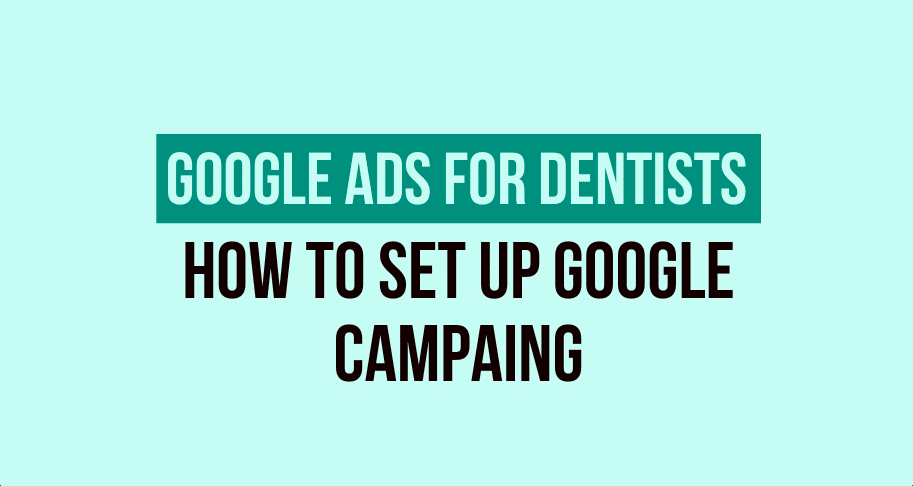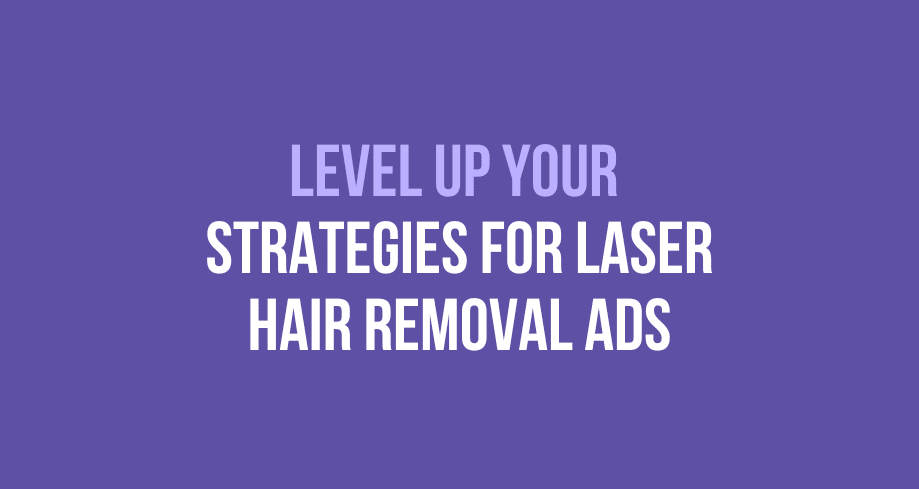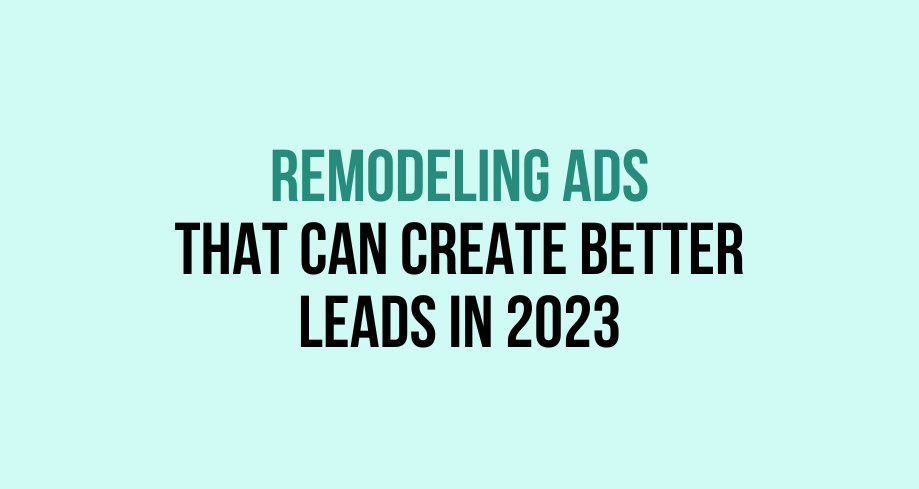Are you a dentist looking for more patients? Google Ads can be the perfect solution to help you get your practice off the ground and grow it into something successful.
With Google Ads, you can create targeted campaigns that reach potential customers in your area actively searching for dental services.
You’ll also have access to powerful analytics tools that will allow you to track the performance of your ads and optimize them over time.
With Google Ads, dentists can take their practices to a new level of success!
How Do Google Ads for Dentists Work?
Google Ads for dentists is a cost-effective way to reach potential patients and increase appointment bookings for dental practices. By running a campaign through Google Ads, businesses can target users actively searching for dentistry services.
Creating an effective Google Ads for dentists campaign can be broken down into three steps:
- Choosing the right keywords.
- Crafting effective ads.
- Optimizing campaigns by tracking results.
How Do I Display a Google Ad for Dentists?
Create a Google Ad account
To get started, the first step is to create an account at Google Ads and make sure you select “Dentists” as your primary category. This will ensure that your ads are correctly targeted toward the right audience.
Choose the Type of Ads
Once you have created the account, you can start setting up your campaign by selecting the type of ad that you would like to run – such as Google discovery ads or display ads.
Based on Targeted Locations
- Choose geographical locations where you want to target potential clients and set a budget for each ad campaign.
Use Related Keywords
- Pick keywords related to dental services that people may be searching for to optimize your ad performance.
Make Your Ads Relevant
Once everything is set up, Google Ads will display your first Google ad whenever someone searches for the keywords or services that you have chosen. It is important to ensure that your ads are engaging, relevant and useful so that viewers click on them and eventually become customers of your practice.
Step-by-Step Guide on How to Set Up a Google Ad Campaign for your Dental Practice
Here’s a step-by-step guide on how to set up a successful Google Ad campaign for your dental practice.
Step 1: Define your Goals
Before setting up a Google Ad campaign, defining your goals upfront is important.
What do you want to achieve from this campaign?
You may want to generate more leads or acquire new patients.
Knowing what outcome you’re striving for will help you determine the type of ads, budget, and strategies to best serve you in achieving these results.
Step 2: Research Your Target Audience
The next step is to research and identify who is looking for your dental implant practice’s services. Understanding who they are will give you insights into their preferences and behaviors so that you can create running ads tailored specifically to them. It’ll also make it easier to craft ad copy with language that resonates with them and draws their attention.
Step 3: Choose Keywords
After establishing who your target audience is, research which keywords they use when searching online related to dental services – such as “dentist near me” or “teeth whitening service NYC” – and add those terms as keywords in your ad group.
- Doing keyword research beforehand saves time later when running the campaigns, allowing them to be active faster.
- You can also use keyword planner tools such as Ubersuggest or Ahrefs Keyword Explorer for ideas on keyword variations or new potential keywords related to their search intent.
Step 4: Create Ads
Now that you have identified the target audience and chosen the relevant keywords, it’s time to start creating ads that will appear at the top of search engine result pages when someone searches using one of those terms.
Use Clear-Ad Copies and CTAs
- Make sure all ads are written in clear language while also using words that evoke emotion like “life-changing,” and “amazing experience,” to stand out among competitors.
- Use call-to-action (CTA) phrases like “Book Now!” or “Learn More!” at the end of each ad so viewers know exactly what action they should take after reading it.
Step 5: Set Budgets & Bids
The final step before launching an ad campaign is setting budgets & bids for each ad group/keyword combination according to its importance or relevance level.
Enhance Bids on Industry Keywords
Higher bids should be placed on more useful or relevant keywords that have better chances of converting visitors into customers than less relevant ones with lower bids.
Maximize ROI
This way, you’ll ensure maximum visibility within reasonable budget limitations while ensuring each dollar spent yields maximum returns from conversions on ads placed during specific periods throughout its duration (daily/weekly/monthly).
Step 6: Monitor & Optimize Ads Performance
Once everything has been set up properly and launched, monitor closely how well each ad performs over time by tracking its metrics such as impressions, clicks, etc., as well as performance data like cost per conversion & return on investment (ROI).
This information allows us to evaluate which ads are performing best and optimize them accordingly by deleting low performers while maintaining high performers by fine-tuning their settings until desired targets are achieved.
Tips on Picking Keywords for Your Google Ads Campaign
Here are some tips to help you choose the best keywords for your Google Ads campaign:
1. Start with Broad Match Types
Use broad match types of your desired keywords to gain maximum exposure. This type of keyword allows your ad to appear when someone searches words related to yours, giving you more chances to appear in front of potential customers.
2. Go Beyond Your Product or Service
Consider including related topics closely associated with your product or service. For example, if you’re selling jewelry, you could include “gift ideas” or “fashion accessories” in addition to “jewelry” on your landing page to capture more queries from people looking for those products.
3. Monitor and Refine Your Keywords List
As you monitor your campaigns’ performance, note any changes in search trends and adjust your keyword list accordingly. This can help ensure that you’re targeting terms with the most relevance and potential for gaining quality leads and conversions.
4. Use Negative Keywords
Negative keywords allow you to avoid displaying ads for irrelevant searches by excluding them from triggering your ads when searched by potential customers.
This helps ensure that only those users who are genuinely interested in what you have to offer to see your ads, which increases the chance they will take action on them instead of simply ignoring them due to irrelevancy.
How to Select Cities and Zip Codes for Your Dental Ad
When selecting cities and zip codes for your dental ad, there are a few key factors to consider.
Step 1: Target the Right Regions
Firstly, you should identify your target demographic and determine what areas they may be likely to live in.
This could include researching population densities and median incomes of different areas to get an idea of the kinds of people who reside in that area.
Look at the average age of residents in different locations, as this could affect the type of dental services they may seek.
Step 2: Highlight Potential Cities and ZIP Codes
Once you have identified potential target areas, you can use online maps or location data tools to pinpoint specific cities or ZIP codes that would best suit your needs.
It would help if you also considered the proximity of these locations to existing dental practices and whether any modifications need to be made for people from these areas to access them easily.
Step 3: Customize Interests Based on Your Audience
Finally, when crafting your ad, you must keep your audience in mind and tailor it to their needs and interests.
This could include researching trends regarding procedures people are asking for or providing information about special offers that might be relevant for certain demographics or locations.
Doing so will help ensure that your ad reaches the right people and is as effective as possible in generating new business for your dental practice.
How to Choose Your Campaign Budget
When choosing a budget for your campaign, several factors must be considered.
Step 1: Identify Your Target Audience
First and foremost, you need to know your target audience. Knowing who you want to reach is essential in determining the right budget.
It would help if you also analyzed the cost of the strategies you plan on using and any associated costs, such as advertising or promotional materials.
Consider any potential obstacles like competition or seasonal shifts in demand that could affect your ability to succeed with the budget you have chosen.
Step 2: Look for Marketing Trends
Researching market trends can also be beneficial when deciding on a budget.
By understanding consumer behavior, you can gain valuable insight into what types of campaigns are most likely to be successful and which ones require more resources from a financial standpoint.
Analyzing competitors’ budgets and results can give you an idea of what kind of investment might be necessary for success.
Step 3: Set Realistic Goals
Finally, it’s important to understand how much money you can spend on your campaign before committing to it.
Setting accurate goals and expectations beforehand is key in creating a realistic budget that will help ensure that your campaign runs smoothly and effectively without going over or under-budgeted.
When done correctly, choosing the right budget for your campaign can help ensure you get the most bang for your buck while still meeting your desired objectives.
How to Get Ready for More Leads With Your Dental Ad Campaign
To ensure you’re ready for more leads and new customers, here are some tips that can help:
1. Analyze Your Current Ads
Take the time to assess your existing ads and determine what’s working, what could be improved upon, and any potential changes that could make them even more successful. Consider analyzing key metrics such as click-through rates or impressions to get an idea of your ads’ performance.
2. Focus on Targeting Specific Audiences
Ensuring your ads reach the right people is important for getting the most out of your ad groups and campaigns. Think about segmenting different types of audiences and using data-driven targeting techniques to reach them more effectively. This could involve testing different demographics, locations, interests, or behaviors to find the best fit for your message and products/services.
3. Leverage Different Platforms & Channels
Consider expanding yourself to more than just one platform when it comes to advertising for your dental practice; consider utilizing a variety of channels such as search engines, social media networks, email campaigns, and display ads to reach potential customers in multiple places at once.
4. Use Engaging Content & Visuals of Your Products & Services
Make sure you craft compelling content that resonates with your target audience and helps draw attention to your brand; use visuals like images or videos whenever possible, as they can be great tools for engaging potential customers with messages quickly and effectively while also making it easier to understand complex concepts or information related to your services or products.
Do Google Ads for Dentists Work?
An effective Google Ads campaign should include relevant keywords, attractive ad copy, and cohesive call-to-action messaging.
Optimized Landing Pages
Paired with carefully crafted landing pages, Google Ads can provide a great opportunity for practices to showcase their services and demonstrate why they are the right choice.
With high-quality images and detailed information about services and offerings, practices can create an engaging online presence to increase leads and conversions.
Various Targeting Options
By taking advantage of the many targeting options available through Google Ads, dental practices can target their campaigns more precisely by focusing on their local area or specific demographics such as age or gender.
This type of targeted advertising is often more cost-effective than blanket advertising methods such as television or print ads, and it is much easier to measure its success rate using analytics tools from Google Ads.
Tailored Ads Based on Feedback
Campaigns can be adjusted based on customer feedback, making it easier to refine messaging to reach better potential patients seeking dentists in their area.
Best Keyword Planner Tools for Ad Campaigns
Google Keyword Planner
- It offers users a comprehensive keyword research tool that provides detailed information about search volume, competition levels, and suggested bid prices.
- This allows marketers to identify profitable keywords and determine an effective bidding strategy.
- It makes targeting campaigns by language or location easy to reach the right audience.
Wordstream
- Another great option is WordStream’s Free Keyword Tool.
- This helpful resource uses real-time data to give users an accurate picture of search trends and competition levels in their target markets.
- It also features a “Negative Keywords” filter that helps eliminate irrelevant search results.
Moz Pro
- Moz Pro is a fantastic choice for those looking for software optimized for PPC campaigns.
- In addition to its keyword research capabilities, Moz Pro provides click-through rates (CTRs) and cost-per-click (CPC) metrics.
- It also shows the average position of ads given certain keywords, so marketers can quickly determine which phrases are performing well with customers.
Semrush
- Finally, SEMrush is a powerful all-in-one suite of tools for digital marketing professionals looking for keyword research insights and competitive analysis.
- Its “Keyword Magic Tool” allows users to explore related topics in a domain and find new ideas to expand their online presence and boost ad performance.
- Other features include traffic analytics reports and keyword difficulty scores, which provide useful insights into how competitively a marketer wants to go after certain phrases or terms.
Frequently Asked Questions
Does Google Ads work for dentists?
Yes, Google Ads can be a great way for dentists to reach their target audiences and promote their services. With a well-structured campaign, dentist offices can use Google Ads to increase brand awareness and generate more leads by targeting people searching for dental services.
How do I advertise my dental services?
The most effective way to advertise your dental services is through digital and traditional marketing methods. Digital marketing includes:
- Creating an optimized website for your practice.
- Utilizing search engine optimization (SEO) to ensure visibility on major search engines like Google and Bing.
- Constructing social media accounts and campaigns that spread awareness about your services.
How do dentists find clients?
Dentists generally find clients through word-of-mouth recommendations, online marketing, social media marketing campaigns, and advertising. They may also attend conferences or workshops to network with other professionals who will refer patients.
How do I increase my Google reviews for dentists?
The first step to increasing Google reviews for dentists is to ensure your dental practice is properly listed on Google My Business. You can then encourage satisfied customers to leave reviews on your profile by providing clear instructions and links, either with a follow-up email or by prominently displaying signs in your office.
Concluding Thoughts
Dentists can get the most out of Google Ads by taking the time to research keywords, creating relevant ad copy, and tracking performance metrics. Moreover, they should ensure that their website contains information about their practice, such as contact details and location, so that customers have all the necessary information when making decisions.
With these tips in mind, any dentist can use Google Ads to maximize visibility online and increase patient acquisition rates.





